Lixen Cephalexin 300 mg Tablets for Dogs: A Complete Guide to Dosage, Uses, and Side Effects
- What is Lixen Cephalexin?
- Lixen Cephalexin is a broad-spectrum antibiotic belonging to the cephalosporin class. This medication targets Gram-positive bacteria, which are responsible for several infections in dogs.
- Overview of the medication’s composition and purpose for veterinary use.
What is Cephalexin and How Does It Work?
- Class of Antibiotics: Cephalexin is a first-generation cephalosporin, part of the beta-lactam class of antibiotics.
- Mechanism of Action:
- Cell Wall Inhibition: Cephalexin interferes with the bacterial cell wall synthesis, ultimately causing the bacteria to burst and die.
Indications for Lixen Cephalexin 300 mg Tablets
- Skin Infections (Pyoderma):
- One of the most common uses for Lixen Cephalexin is to treat pyoderma, a skin infection caused by Staphylococcus pseudintermedius or other bacteria.
- Symptoms of Pyoderma: Red, inflamed skin, pustules, and crusting.
- Respiratory Tract Infections:
- Lixen Cephalexin is used to treat respiratory infections caused by bacterial pathogens, including pneumonia, bronchitis, and tracheobronchitis.
- Symptoms: Coughing, labored breathing, nasal discharge, and lethargy.
- Ear Infections (Otitis):
- Lixen Cephalexin is also effective against ear infections caused by bacteria such as Staphylococcus and Pseudomonas.
Lixen Cephalexin 300 mg Tablets for Dogs: Recommended Dosage and How to Give
Lixen Cephalexin 300 mg Tablets are typically prescribed to treat bacterial infections in dogs, including skin infections, urinary tract infections, respiratory infections, and more. Below is a general guide for the dosage and administration of Lixen Cephalexin 300 mg Tablets.
General Dosage Guidelines
The typical dosage of Lixen Cephalexin 300 mg Tablets is based on the dog’s weight and severity of the infection. The general dosing guideline is as follows:
| Dog Weight | Dosage | Administration Frequency | Duration of Treatment |
| Up to 5 kg (11 lbs) | 150 mg (half tablet) | Every 12 hours | 7 to 10 days |
| 5 – 10 kg (11 – 22 lbs) | 300 mg (one tablet) | Every 12 hours | 7 to 10 days |
| 10 – 20 kg (22 – 44 lbs) | 450 mg (one and a half tablets) | Every 12 hours | 7 to 10 days |
| 20 – 30 kg (44 – 66 lbs) | 600 mg (two tablets) | Every 12 hours | 7 to 10 days |
| 30 – 40 kg (66 – 88 lbs) | 750 mg (2.5 tablets) | Every 12 hours | 7 to 10 days |
| 40 – 50 kg (88 – 110 lbs) | 900 mg (three tablets) | Every 12 hours | 7 to 10 days |
How to Administer Lixen Cephalexin 300 mg Tablets:
- Administration:
- With or without food: Lixen Cephalexin can be given with or without food. However, if your dog has a sensitive stomach, it is recommended to give the tablet with food to reduce gastrointestinal upset.
- Giving the Tablet:
- If your dog has trouble swallowing tablets, the tablet can be crushed and mixed with a small amount of food or placed inside a pill pocket.
- Consistency:
- Ensure that the medication is given at the same time each day to maintain a consistent level of the drug in your dog’s system.
Important Considerations:
- Complete the course: Always complete the full course of treatment, even if your dog’s symptoms improve before the treatment period ends. Stopping early can result in the infection returning or bacteria becoming resistant to the antibiotic.
- Consult your vet: If your dog shows any adverse reactions or if you have concerns regarding the medication, contact your veterinarian immediately.
Precautions and Contraindications of Lixen Cephalexin 300 mg Tablets for Dogs
Lixen Cephalexin 300 mg Tablets is generally safe for use in dogs, but like any medication, it requires careful consideration. Here are some key precautions and contraindications to keep in mind:
Precautions:
- Kidney Disease:
- Lixen Cephalexin is primarily excreted through the kidneys, so dogs with pre-existing kidney disease or compromised renal function should be carefully monitored.
- Monitoring: Regular blood tests or kidney function tests may be necessary during treatment.
- Pregnancy and Lactation:
- While Cephalexin is generally considered safe during pregnancy in some animals, it should only be used in pregnant or lactating dogs under the guidance of a veterinarian.
- There is limited data on its safety during pregnancy, so caution is advised unless absolutely necessary.
- Allergies to Cephalosporins or Penicillins:
- Cephalexin belongs to the cephalosporin class of antibiotics, and some dogs may be allergic to this group of medications. If your dog has a known allergy to penicillin or cephalosporins, Lixen Cephalexin should not be administered.
- Signs of Allergic Reaction: Rash, hives, swelling, or difficulty breathing require immediate discontinuation of the drug and emergency veterinary care.
- Pre-existing GI Issues:
- Dogs with a history of gastrointestinal problems such as inflammatory bowel disease (IBD) or gastritis should be monitored closely while on Lixen Cephalexin. It can cause mild gastrointestinal upset, which could worsen pre-existing conditions.
- Other Medications:
- Lixen Cephalexin can interact with other medications, including antacids, probenecid (used for gout), and other antibiotics. Always inform your veterinarian of any other treatments or medications your dog is taking.
- Drug Interactions: Some interactions may reduce the effectiveness of Cephalexin or increase the risk of side effects.
Contraindications:
- Hypersensitivity to Cephalosporins:
- Lixen Cephalexin should not be used in dogs that have a known allergy or hypersensitivity to cephalosporin antibiotics or penicillin
- Severe Renal Impairment:
- If your dog has severe renal failure, Lixen Cephalexin should generally be avoided, as it may lead to toxicity or further strain the kidneys. A veterinarian may recommend alternative antibiotics with a safer profile for dogs with significant kidney disease.
- Severe Gastrointestinal Disease:
- If your dog has severe gastrointestinal disease or intestinal obstructions, the medication may not be fully absorbed, reducing its effectiveness.
Side Effects of Lixen Cephalexin 300 mg Tablets for Dogs
Like any medication, Lixen Cephalexin 300 mg Tablets may cause side effects in some dogs. The majority of side effects are mild and transient, but more severe reactions can occur in rare cases. Here are the potential side effects:
Common Side Effects:
- Gastrointestinal Upset:
- The most frequently reported side effect is vomiting, diarrhea, and loss of appetite.
- Management: If gastrointestinal upset occurs, giving Lixen Cephalexin with food may help reduce the chances of stomach irritation.
- Lethargy or Fatigue:
- Some dogs may experience mild lethargy or fatigue during the course of treatment. This usually resolves on its own after a few days of treatment.
Less Common Side Effects:
- Allergic Reactions:
- While rare, dogs may experience allergic reactions to Lixen Cephalexin. Symptoms include rash, itchiness, swelling (especially around the face and neck), difficulty breathing, and anaphylaxis.
- Action: If any signs of an allergic reaction occur, stop the medication immediately and seek veterinary assistance. An emergency treatment may be necessary.
- Changes in Urination:
- Some dogs may experience increased or decreased urination, especially in those with underlying kidney issues. This could be due to the way the medication is processed in the kidneys.
- Monitoring: Watch for any signs of changes in urination frequency, which may indicate kidney strain.
- Superinfections:
- Long-term or repeated use of Lixen Cephalexin can disrupt the natural balance of bacteria in the gut, leading to yeast infections or the overgrowth of resistant bacteria. If a secondary infection develops, consult your vet about the need for additional treatment.
- Hematological Changes:
- In rare cases, Lixen Cephalexin may affect blood cell counts, leading to low white blood cell counts (leukopenia) or low red blood cell counts (anemia).
- Symptoms: Unexplained bruising, pale gums, or weakness may indicate a blood disorder. Contact your vet if these symptoms arise.
Severe Side Effects (Rare):
- Kidney Toxicity:
- While rare, Cephalexin can cause kidney toxicity, particularly in dogs with pre-existing kidney disease.
- Severe Allergic Reactions:
- In severe cases, an allergic reaction may progress to anaphylactic shock, a life-threatening condition that requires immediate medical attention.
- Symptoms: Swelling, difficulty breathing, collapse, and shock.
Benefits of Lixen Cephalexin 300 mg Tablets for Dogs
- Effective for Skin Infections (Pyoderma):
- Commonly prescribed to treat pyoderma, a bacterial skin infection, Lixen Cephalexin is highly effective against Staphylococcus pseudintermedius, the primary bacteria responsible for these conditions.
- Works on Respiratory Infections:
- It is highly effective for respiratory infections, including pneumonia and bronchitis, by targeting bacteria like Streptococcus and Staphylococcus that commonly cause these conditions in dogs.
- Effective for Bone and Joint Infections:
- For deep infections such as osteomyelitis and septic arthritis, Lixen Cephalexin helps reduce bacterial load and inflammation, promoting recovery in affected joints and bones.
- Minimal Side Effects:
- Lixen Cephalexin is generally well-tolerated, with mild gastrointestinal upset (e.g., vomiting or diarrhea) being the most common side effect. Serious side effects are rare, making it a relatively safe choice for most dogs.
- Quick and Reliable Recovery:
- By targeting the root cause of bacterial infections, Lixen Cephalexin helps speed up recovery time, improving your dog’s health and comfort quickly and effectively.
- Low Risk of Resistance:
- The low resistance rate associated with Lixen Cephalexin ensures that it remains effective over time, making it a reliable treatment option for recurring or difficult-to-treat infections.
Veterinary Research on Lixen Cephalexin 300 mg Tablets for Dogs
Clinical studies confirm that Lixen Cephalexin 300 mg Tablets are highly effective for treating bacterial infections in dogs, such as pyoderma, UTIs, respiratory infections, and bone/joint infections.
- Skin Infections (Pyoderma): Proven to be 90% effective in treating superficial skin infections caused by Staphylococcus pseudintermedius.
- Urinary Tract Infections (UTIs): Effective against common pathogens like coli and Staphylococcus.
- Respiratory Infections: Works well for bronchopneumonia, especially against Streptococcus and Staphylococcus.
- Bone and Joint Infections: Reduces inflammation and bacterial load in osteomyelitis and septic arthritis.
Side effects are mild (e.g., gastrointestinal upset), and serious issues like kidney toxicity are rare. Lixen Cephalexin has a low resistance rate, making it a reliable antibiotic when used appropriately.
Conclusion
Lixen Cephalexin 300 mg Tablets are a highly effective and trusted treatment option for a wide range of bacterial infections in dogs. Whether dealing with skin infections like pyoderma, urinary tract infections, respiratory issues, or bone and joint infections, this broad-spectrum antibiotic offers a reliable solution to ensure your dog’s health and recovery. The medication works by inhibiting bacterial cell wall synthesis, effectively targeting and eliminating Gram-positive bacteria. With proper use, under the guidance of your veterinarian, Lixen Cephalexin helps your dog recover quickly and comfortably.







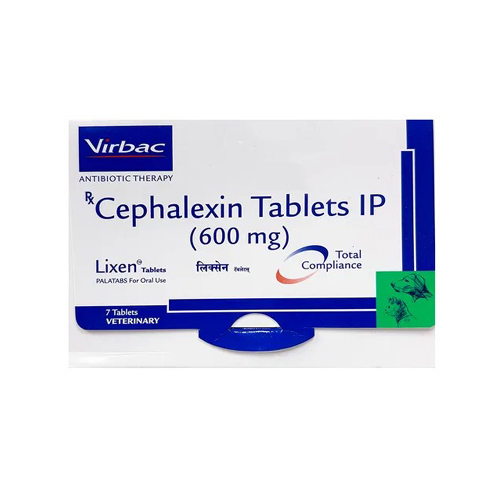
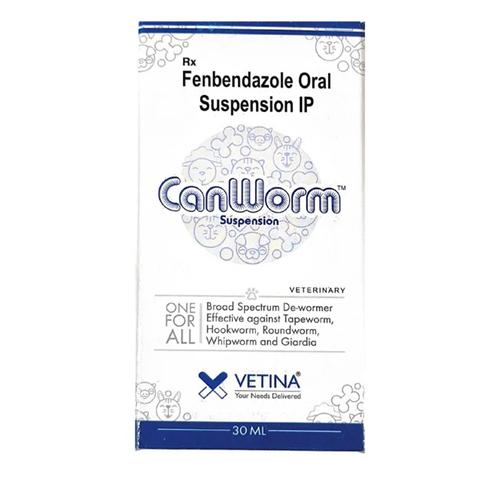

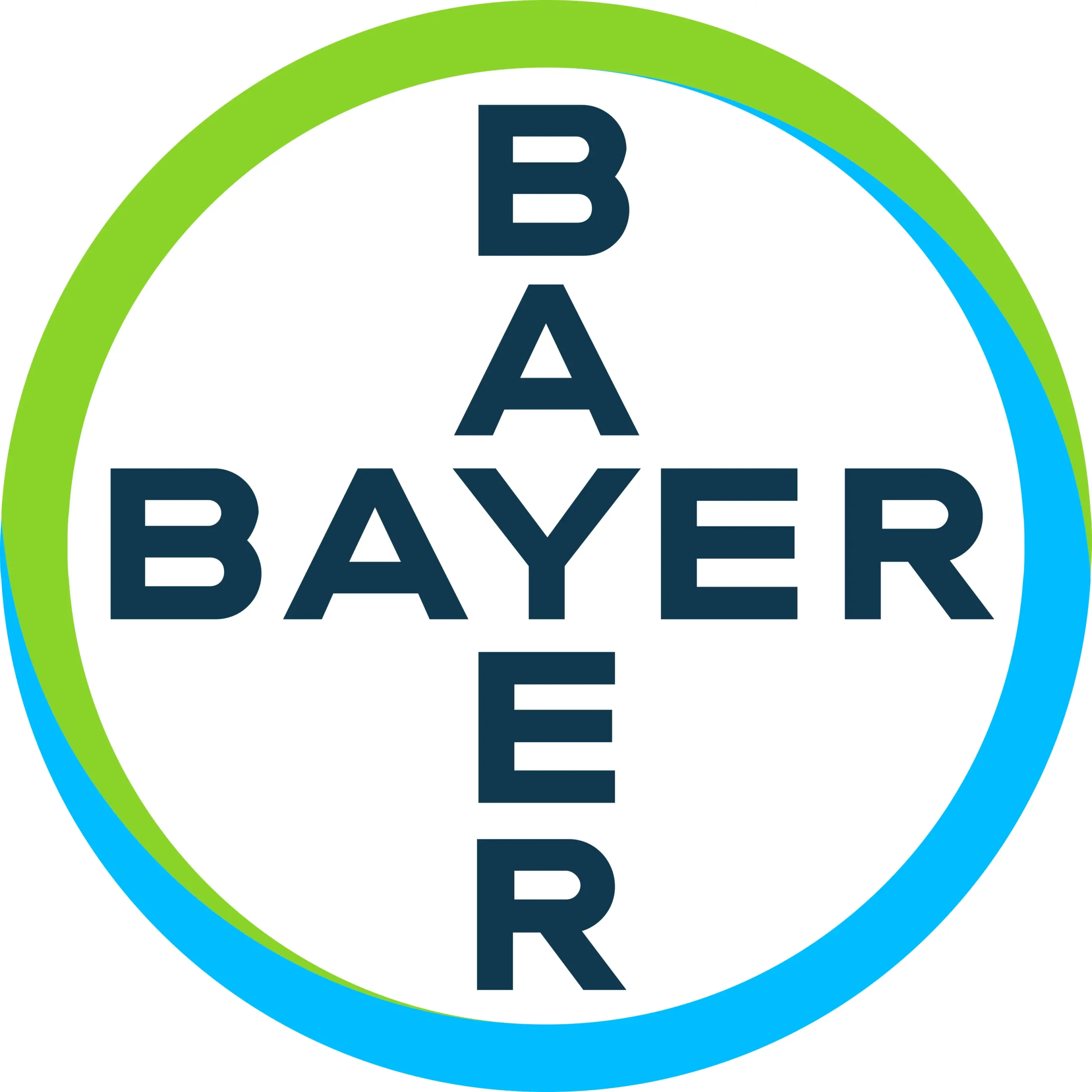
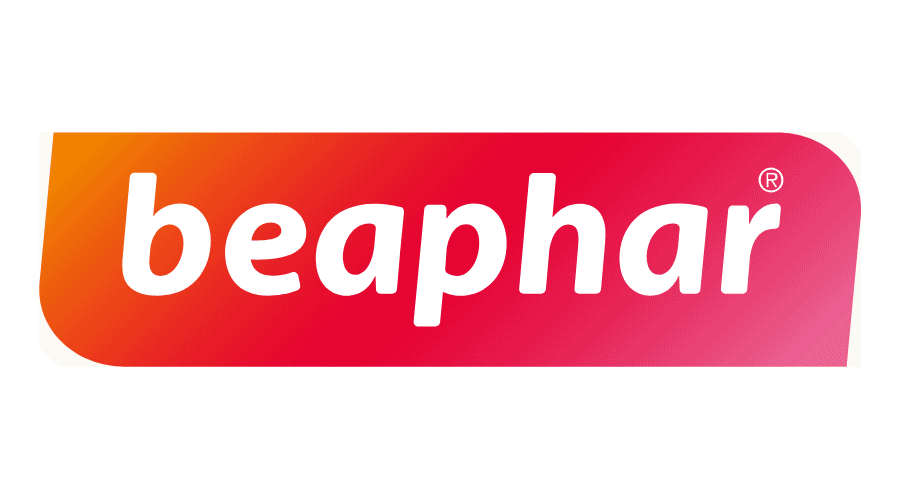
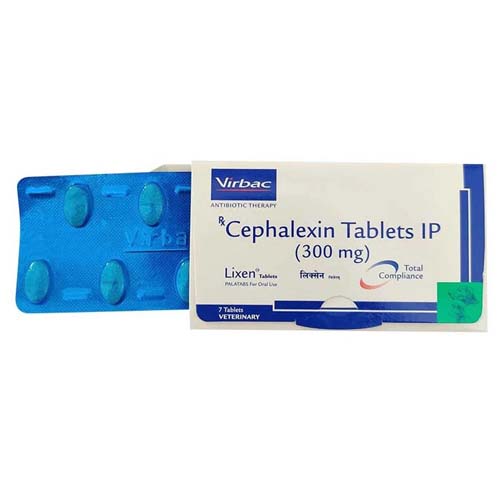
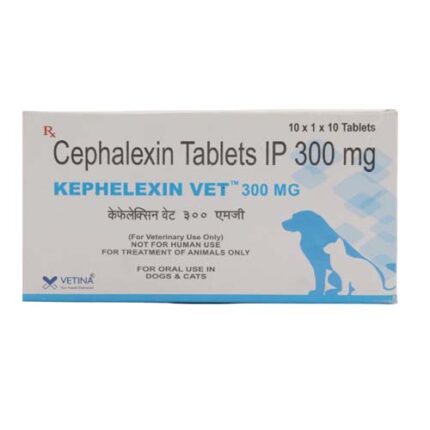
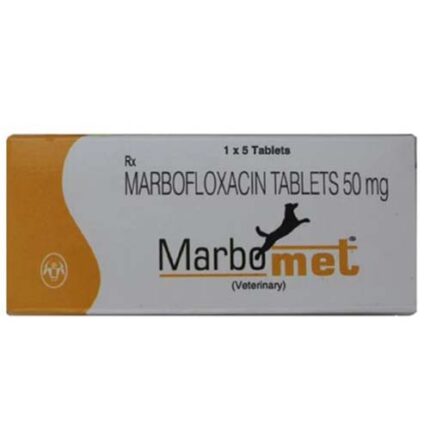
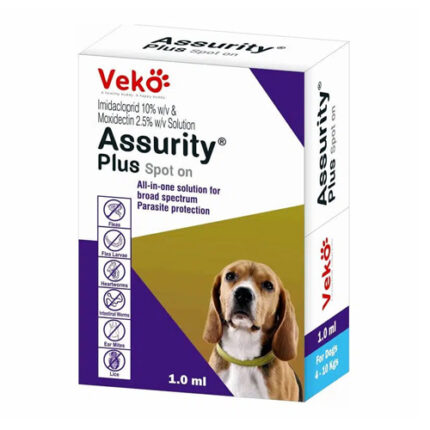
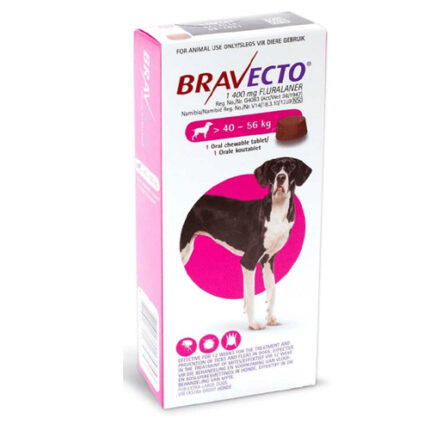
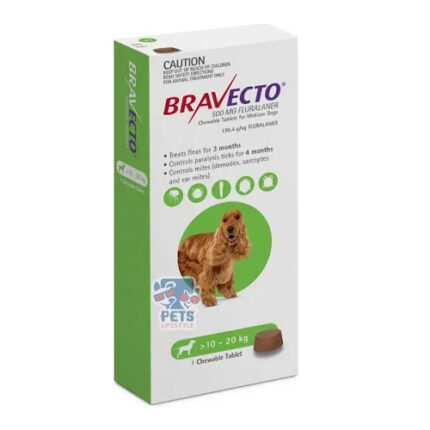
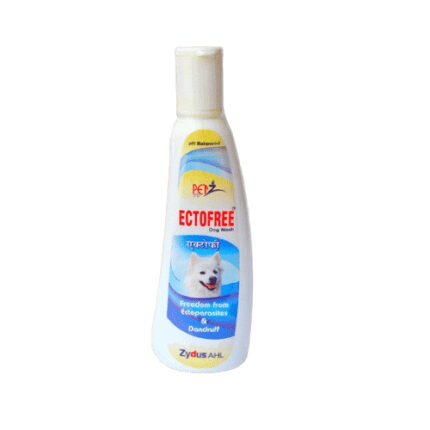
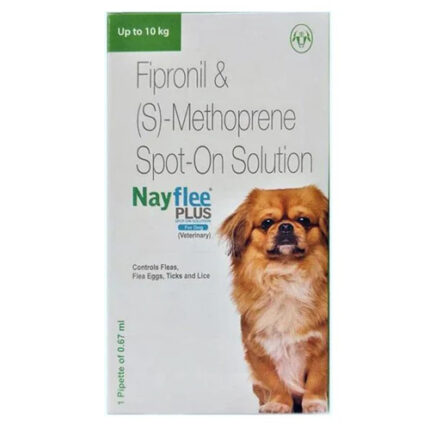
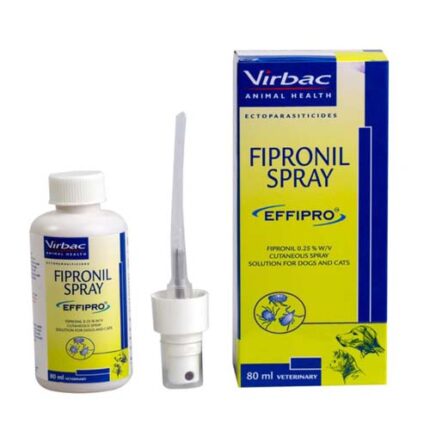
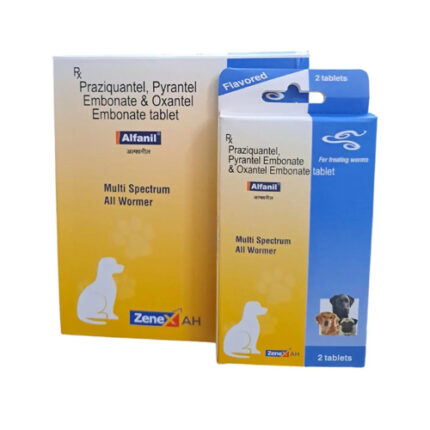
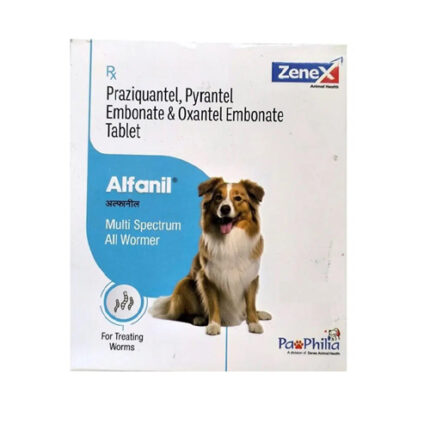
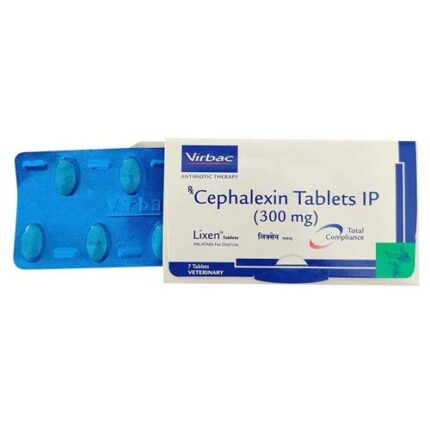
Reviews
There are no reviews yet.